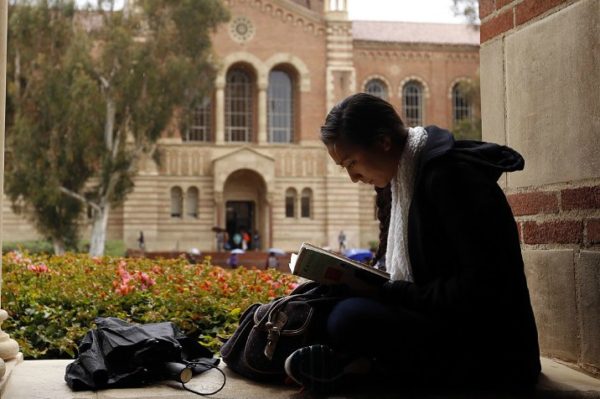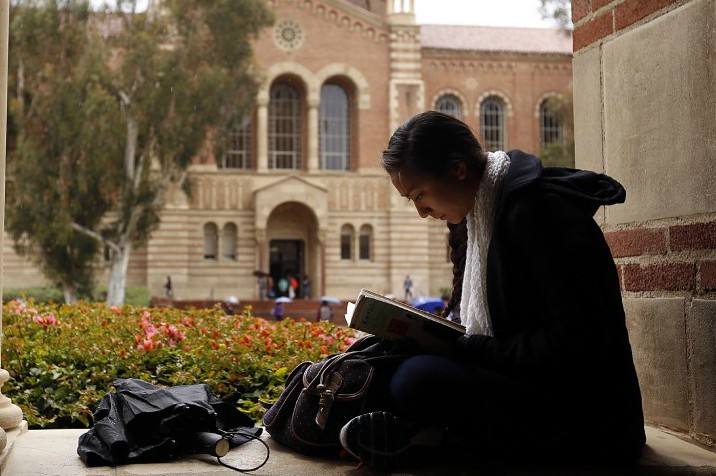
Image source: PBS.org
Recently, a year-long study conducted by a team of economists from Stanford, Harvard, and Brown found that low-income college students who received aid throughout their four years were able to achieve middle-class and even upper-middle-class status later in life. The study measured how every single U.S college assisted kids from working-class families, and how that assistance benefited them in the future (1). While outliers of poor students achieving top 1% socioeconomic status existed after graduating from top ivy leagues, most low-income students were burdened by heavy debt, high dropout rates, and low social mobility even after college. However, among the more accessible colleges that working-class students attended, the California State University and the City University of New York (CUNY) systems exhibited stellar results on the helping low-income students achieve greater social mobility (1).
There is a particular focus on a program in the CUNY system, called the SEEK (Search for Education, Elevation, and Knowledge) program designed to help “academically borderline, low-income students complete a four-year degree” through aid and tutoring all four years (1). Economists found that these students had higher incomes in later adult years than students from higher-income families with similar grades. The SEEK program was established after the success of the College Discovery Program, a program implemented by the Board of Higher Education. Both programs sought to broaden accessibility for higher education, particularly for low-income black and Puerto Rican students, who were coming from under-funded high schools (1).
In May of 2017, Trump announced an education budget cutback that would negatively impact low-income and HBCU (Historically Black Colleges and Universities) students. It would cut more than $143 billion dollars from federal aid over the next 10 years, putting these students in a “weaker position than they’ve ever been in”, according to UNCF president Michael Lomax (2). This includes cutting work-study in half, ending public-service loan forgiveness, and reducing the Pell Grants, federal aid awarded to low-income students (3). Secretary of Education Betsy DeVos has been a proponent of this bill and supports a more state-sponsored aid approach.
This announcement was greatly disturbing to many low-income minority students like me who are only able to attend universities because of the aid they receive. The pursuit of higher education should be accessible to all despite socioeconomic status. Through more funding for programs like SEEK, low-income students will get the support and resources they deserve in order to secure a financially stable future for themselves and their families.
The vendetta here is state vs federal funding of higher education. Proponents of the cuts to federal funding believe that states should be the ones to allocate appropriate funding for schools and allow parents to have “educational choice” where to send their children (3). Critics of the bill believe that this is just another way to spite poor minority students, and fund charter and private school vouchers, that tend to pump money to schools in more affluent areas (4).
Additionally, the appropriation of funds towards these new educational avenues does not address the discrimination and inaccessibility that private school vouchers and charter schools are known for. This fear is aggravated when Secretary DeVos “refused to commit to aggressively enforce civil rights protections” that would protect students from the potential side effects of enforcing this type school system (5). School vouchers come from a long history of racial segregation, where funds were ultimately siphoned to wealthier, whiter schools while newly integrated schools were systematically under-funded by school administration and the states (5). Students of color had no choice but to attend these underfunded schools, as private voucher schools rejected minority students (5). Today, this same pattern of discrimination can be found in existing private voucher and charter school where certain religious institutions are free to reject LGBT+ identifying students (6).
Even as necessary federal financial aid is, it is still flawed. “Colleges get most of the money, students only benefit a little while in college and then have to pay back the entire loan amount after graduation… 70 percent of those onerous student loan payments are actually paying back money that the colleges wouldn’t have charged without the loans,” according to Forbes contributor Jeffrey Dorfham (7). Additionally, working-class students who come from under-resourced high schools also struggle with keeping their grades up academically — often lacking the social capital, exposure, and resources many of their privileged peers had. According to a Huffington Post article, “89 percent of low-income first-generation students leave [school] without a degree” and 31.9% of four-year low-income students will have to take a remedial course at some point (8).
Because of this, programs like SEEK that give grants rather than loans that must be paid back are life-savers for students who cannot possibly afford the burden of never-ending debt. Similar to SEEK, The Educational Opportunity Program (EOP), available for the University of California and California State University systems, is another program that provides mentorship, academic help, and financial aid for struggling low-income students (9). Statistics show that students are more likely to stay and graduate from a four-year college than their non-EOP counterparts — a clear sign that counseling and extra aid can be a deciding factor to earning a degree or not (10).
A clear solution to making higher education more accessible to low-income and minority students is to simply provide more support to them through programs like SEEK and the EOP. Not only does federal financial aid not cover all costs a student can experience — like textbooks, food, living accommodations, familial bills and loan repayment — it also leaves students lacking academic advising that can save them from sinking in a highly competitive environment. The White House should work towards allocating more funds to states to provide the low-income programs as described in order to bolster student success rate, instead of privatizing public education. Harsh cuts to federal aid and spending for public education would take opportunities out of the hands of the most vulnerable. According to the results of the SEEK study, programs like this prove to help low-income students reach financial prosperity in the long run. Generations of successful low-income first-generation students can pour their knowledge and innovation into the United States for the better. Investing in low-income students is surely an investment in our future.
Take Action:
To support low-income minority college or high school students, consider donating to the following non-profit organizations listed here: https://www.collegeraptor.com/getting-in/articles/college-admissions/8-awesome-organizations-that-help-low-income-students-get-to-college/
Understand how first generation students of color can be better assisted by having mentorship that understands their struggle by watching this video: https://youtu.be/B1O9Lvv8lv4
Lastly, to donate the SEEK program that was highlighted in this article, go to: https://giving.ccny.cuny.edu in order to give even more students a chance to receive higher education.
References:
- College System Pushes Many Graduates Into Middle Class. (2017, February 5). Retrieved February 9, 2018, from https://www.usnews.com/news/best-states/articles/2018-02-05/new-york-college-system-pushes-many-graduates-into-middle-class-and-beyond
- Allen, K. (n.d.). How Trump’s budget would affect low-income students, historically black colleges. Retrieved February 12, 2018, from http://abcnews.go.com/US/trumps-budget-affect-low-income-students-historically-black/story?id=47719857
- Betsy DeVos defends school spending plan that cuts $9 billion. (2017, May & june). Retrieved from http://www.nola.com/education/index.ssf/2017/05/devos_federal_education_budget.html
- Brown, E., Strauss, V., & Douglas-Gabriel, D. (2017, May 17). Trump’s first full education budget: Deep cuts to public school programs in pursuit of school choice. Retrieved February 12, 2018, from https://www.washingtonpost.com/local/education/trumps-first-full-education-budget-deep-cuts-to-public-school-programs-in-pursuit-of-school-choice/2017/05/17/2a25a2cc-3a41-11e7-8854-21f359183e8c_story.html?utm_term=.bf600114cc4e
- Ford, C., Johnson, S., & Parlow, L. (2017, July 12). The Racist Origins of Private School Vouchers. Retrieved from https://www.americanprogress.org/issues/education-k-12/reports/2017/07/12/435629/racist-origins-private-school-vouchers/
- Donheiser, J. (2017, August 10). Chalkbeat explains: When can private schools discriminate against students? Retrieved February 12, 2018, from https://www.chalkbeat.org/posts/us/2017/08/10/chalkbeat-explains-when-can-private-schools-discriminate-against-students/
- Dorfman, J. (2015, July 13). Financial Aid Helps Colleges More Than Students. Retrieved February 12, 2018, from https://www.forbes.com/sites/jeffreydorfman/2015/07/13/financial-aid-helps-colleges-more-than-students/#77a7e59f693f
- Carter, C. J. (2013, March 19). Why Aren’t Low-Income Students Succeeding in School? Retrieved February 12, 2018, from https://www.huffingtonpost.com/carol-j-carter/why-arent-low-income-stud_b_2909180.html
- Educational Opportunity Program (EOP). (n.d.). Retrieved February 12, 2018, from http://admission.universityofcalifornia.edu/campuses/specific-populations/educational-opportunity-program/index.html
- How Will EOP Benefit Me? (n.d.). Retrieved February 12, 2018, from http://www.fullerton.edu/eop/admissions/benefits.php




